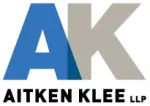The Federal Court recently issued its decision in Eli Lilly Canada Inc. v. Teva Canada Limited, 2017 FC 88, Teva's action for damages under section 8 of the PMNOC Regulations in relation to its generic version of the drug olanzapine. Eli Lilly had applied for a prohibition order to prevent Teva from receiving a Notice of Compliance, which the Court dismissed in 2007, thus giving rise to Teva's statutory right to damages.
The question of the damages owed to Teva raised five main issues:
- What is the period of liability?
- What was the size of the olanzapine market?
- What was the generic share of the olanzapine market?
- What was Teva's share of the generic olanzapine market?
- What is the real amount of Teva's losses?
The Court agreed with Teva and its experts on most issues.
Eli Lilly argued that the start date of the relevant period should be March 22, 2007 rather than March 3, 2006. The Court rejected this argument and held that Teva had a process in place to acquire necessary API, its supplier was able to supply as necessary, and there was no evidence that Teva's product validation would have caused any delay.
The parties agreed as to the size of the total olanzapine market, but disagreed over the generic share of the overall olanzapine market, largely based on when the provinces would have added the product to their drug formularies. The addition of a drug to a provincial formulary generally coincides with a large increase in generic sales in that province. The Court accepted Teva's positions with respect to almost every province.
Eli Lilly argued that, in the but-for world, Teva would not have been the only generic on the market but would have competed with Apotex (thereby lowering Teva's lost sales and damages). The Court found that Apotex would not have entered the market, noting that Eli Lilly had commenced proceedings against numerous generics in the real world, many initiated after Teva was successful in the prohibition proceedings. Lilly's actions in the real world did not suggest that it would have acted differently in the but-for world. Apotex would have had to address the PMNOC Regulations before entering the market and Lilly would have invoked the remedies available under the PMNOC Regulations against other generic companies wishing to market olanzapine, including Apotex, as it had in the real world.
The Court accepted Eli Lilly's submission that "pipefill" was not compensable. The concept of pipefill is that a manufacturer must generally get its product into the channels of trade (e.g., wholesaler inventory) before sales to customers can take place. There is often a delay between the shipment of a product from the factory and the ultimate retail sales. Teva argued that a pipefill adjustment was necessary to account for shipments it would have made during the liability period that were not reflected in the sales data. The Court held that pipefill does not represent lost sales during the liability period and that sales outside the prescribed period are not compensable under the PMNOC Regulations. A pipefill adjustment has been applied in other section 8 cases, however, the Court held that the issue "was not strenuously contested" in those cases.
The Court accepted Teva's submission that the trade spend rate for olanzapine would have been lower than the rate Teva paid in the real world. Teva would have been the sole generic on the market. The Court has recognized in multiple cases that trade spend rates are generally lower when there are no other generic competitors (e.g. Apotex Inc v Takeda Canada Inc, 2013 FC 1237 at paras 161-162 and Teva Canada Limited v Pfizer Canada Inc, 2014 FC 248 at para 217). Teva was the sole generic in the real world but paid a higher rate on olanzapine to leverage opportunities relating to other products. These opportunities existed when Teva entered the market in 2007, but would not have existed in the but-for time period. Accordingly, the real world trade spend rate was higher than what Teva would have paid had it entered the market during the relevant time period.
Justice O'Reilly did not quantify an amount of damages but, as is common in section 8 cases, ruled on the issues that will affect the calculation by the parties' experts.
Justice O'Reilly commented on the nature of evidence permissible in the "but for" analysis. Questions asking a witness what they would have done in the but-for world are not admissible. The Court suggested that the best way to adduce the necessary evidence would be to explore what the witnesses did in the real world and then ask whether there was any reason why they would have acted differently in the but-for world. In the Court's view "[t]his would confine fact witnesses to their own knowledge and experience, as opposed to asking them, in an open-ended fashion, what they would have done or what they thought would have happened in the but-for world."
Teva was represented by Aitken Klee LLP.
A copy of the judgment can be found here.
The content of this article is intended to provide a general guide to the subject matter. Specialist advice should be sought about your specific circumstances.


